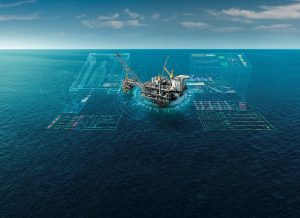
Digital transformation of businesses is receiving a lot of media attention at the moment, leading to some articles that query to what extent the topic is hype, and how companies should plan their implementation strategies to achieve profitable gains.
Process industry has utilised digital technologies for efficiency improvements over many decades, such as automated and model-based process control, online sensors and data analytics. The rate of development in digital technologies has however accelerated in recent years, leading to increased focus on the potential for efficiency and economic gains from implementation of new digital technologies. New sensor technologies have been developed, storage capacity has increased, and the processing capacity and speed has increased dramatically. The complexity of the possibilities within digital transformations of industry has also increased dramatically. These developments have led to an increased focus on the opportunities represented by digital transformations, and most industry-related conferences include sessions dealing with digitalisation. Many digital technologies are mentioned in the overview of strategic technology trends that consultancy Gartner updates each year, and most of these lie high on the “hype peak of inflated expectations” . Along with the many articles highlighting the opportunities represented by digital transformation there are many articles questioning to what extent it is just hype, or if it represents practically realisable gains?.

https://assets.new.siemens.com
Hype and reality in digitalisation
Scanning through articles on digitalisation it is apparent that the majority are generated by journalists, consultants or academics, and there is rarely any attempt to provide a quantification of gains that have been realised, or even are projected to be realised. This is in line with the progress through the Gartner Hype Cycle, from Innovation Trigger through the Peak of Inflated Expectations, Trough of Disillusionment and Slope of Enlightenment. Nevertheless, it is necessary for companies to keep an eye on the cost-benefit relationship when considering new investments, even if the media hype is saying “digitalisation or die”.
Articles analysing the balance between the hype and reality of digital transformation are presented here , and here . These articles consider the question of the strategic timing of implementation of digital transformations, and highlight that just because something is possible, does not mean that it is profitable. These articles also highlight the lack of quantification of the expected benefits from the implementation.
Examples of articles that attempt to quantify the gains realised through digital transformation can also be found. An article examining the petroleum industry estimated that North Sea operators could save up to $11/barrel (20%) by implementing the full digital stack (IoT, soft automation, machine learning and advanced analytics – with 60% of the gain coming from advanced analytics. On the other hand, a gain of 20-30% of the total maintenance budget from implementing predictive maintenance is more difficult to realise than for example reducing data costs by moving to cloud storage. A further article claims a 45% reduction in oil production cost, 27% decrease in upstream capital cost and 18% in upstream operating cost. Gains are also easier to realise with greenfield projects, such as from implementing an intelligent projects approach . Brownfield sites are estimated to gain most from data analytics, particularly with a focus on avoiding production stops.
Innovations in the fishery industry
In the fish farming industry there is a strong push for introduction of innovative technologies that improve productivity. This has been driven by the introduction by the authorities of licences that are only available for installations that include a significant innovative element . An example of new development is the Ocean Farm 1 developed by SalMar- it has 20 000 sensors and will utilise data analytics to optimise the handling of the fish and the environment. The increased automation allows the remote control of the operations, such as the feeding, allowing the fish farm to be located further from shore. This could allow fish feed suppliers to offer a “Feed-as-a-Service”, where they contract a certain weight gain in the fish and control the feeding operation remotely . The feed supplier retains the economic benefit of the reductions in feed wastage from improved feeding efficiency. Cermaq is introducing the iFarm concept , where each fish is regularly scanned using face recognition and its status analysed in terms of activity level, stress, health and weight gain. Eight other digital technologies disrupting aquaculture were presented in an article , including the eFishery concept for automation of feeding which is claimed to reduce feed costs by up to 21%.

Individual scanning and identification of fish (Cermaq)
It is hoped with the increasing maturity of digital transformation there will come more articles with specific details of the quantification of gains realised. A first step in this direction is to recognise that digital transformation involves numerous different technologies, rather than a single ‘one size fits all’ solution. The gains come from the combination of the different technologies and data analytics, such that it is difficult to separate out the contributions of each component.
Ross Wakelin
Northern Research Institute Narvik A.S.
ross@tek.norut.no
(47) 99 252 485









